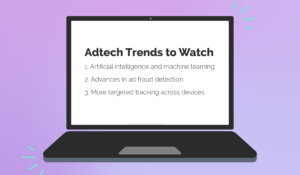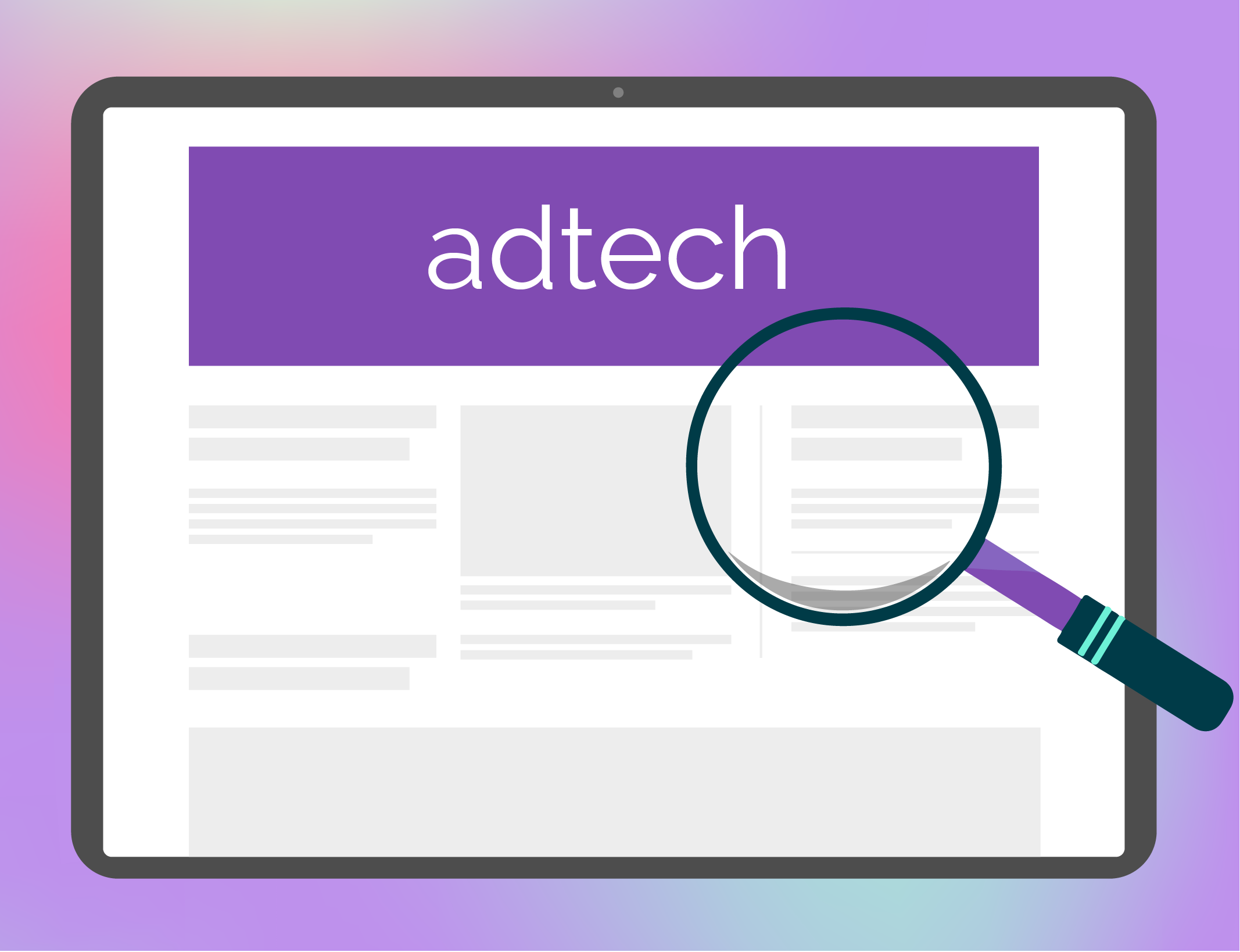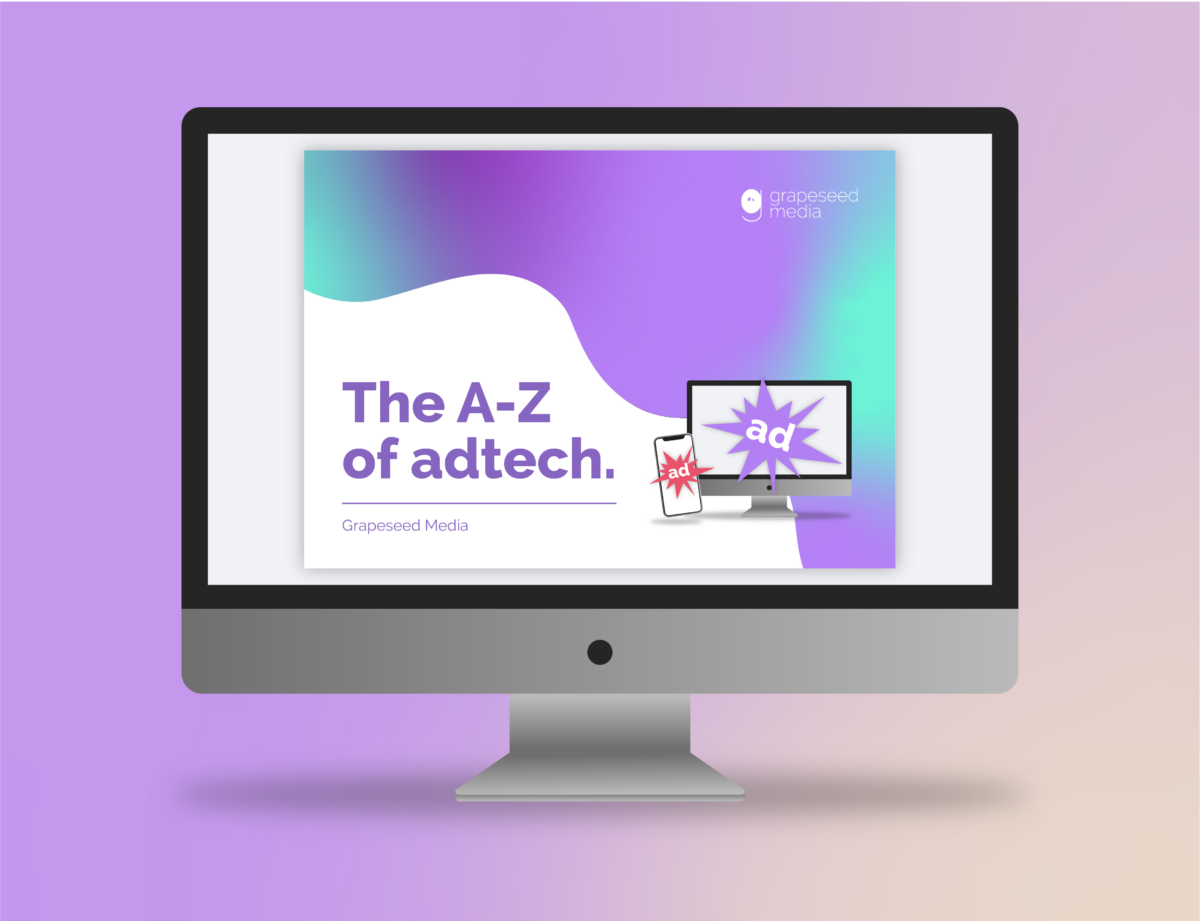Adtech — or advertising technology — refers to the technology ecosystem marketers and advertisers use to serve, monitor, and manage digital ads.
The advent of programmatic advertising in the early 2000s opened up a world of possibilities for advertisers. It took the human transactions out of buying and selling ad space and automated the bidding process so that ads could be shown anywhere on the internet.
But programmatic ads posed a new challenge. In the early days of programmatic, there was far less transparency about where ads were being served and when, which meant attribution for conversions became more difficult. More adtech solutions evolved to meet these new challenges, and the adtech ecosystem grew into a sprawling metropolis, becoming ever-more complex.
At the end of 2021, the Association of National Advertisers (ANA) announced it had commissioned PwC to lead an investigation into the “mind-numbing complexity” of the adtech landscape.
So it’s no wonder that adtech myths abound and digital marketing professionals are confused. This article will demystify adtech, its benefits for marketers, current concerns around adtech, and future trends to watch out for.
What Is Adtech?
Adtech comprises a wide range of software and tools designed to automate and optimize the processes of targeting, delivering, analyzing, and improving digital ad campaigns.
Some of the main types of adtech include:
- Demand-side platform (DSP) — DSPs use real-time bidding auctions to buy digital advertising space. They connect advertisers with ad networks and ensure ads are served to the target audience.
- Supply-side platform (SSP) — SSPs allow publishers to sell ads programmatically. They connect publishers to ad exchanges and make their inventory available for DSPs to bid on.
- Ad exchanges — are marketplaces that bring DSPs and SSPs together and facilitate the automatic buying and selling of ad space.
- Ad networks — connect DSPs and SSPs to buy and sell ad inventory.
- Ad server platforms — ad server platforms are where advertisers store their digital assets for distribution. The platform decides which ads to display, at what time, and the website or app they appear on.
- Data management platform (DMP) — combines adtech and martech. A DMP collects and organizes user data that advertisers can use to create different audiences based on behavior.
- Ad forecasting software — these software programs use consumer behavior data to help advertisers optimize their ad spend
Although the terms are often used interchangeably, there’s a distinction between adtech and martech (marketing technology). Adtech is used for the buying, selling, management, analysis, and optimization of digital ads.

By contrast, martech is software that allows marketers to run, manage, and optimize marketing campaigns. Martech includes:
- Customer relationship management (CRM) systems
- Email marketing
- Social media marketing
- Marketing automation
The Benefits of Adtech
Harnessing adtech to improve your digital advertising campaigns has many advantages. Let’s take a look at five of the main benefits.
1. It Improves Buying Efficiency
Thanks to its vast reach, adtech allows advertisers to distribute ads to multiple publishers simultaneously, facilitating the buying and selling of ad inventory in milliseconds.
Real-time bidding enables a more streamlined buying process, giving advertisers the ability to fine-tune their targeting strategy to focus on the most relevant ad inventory — resulting in a better return on ad spend (ROAS).
2. It Lets You Target Relevant Audience Segments
Through adtech, advertisers are able to deliver their ads to selected audiences based on their engagement with the brand. For example, if a user visits a particular product page of your website and then leaves, you can retarget them across different websites, apps, and devices with a special offer on that product.
By using intelligent algorithms and machine learning, advertisers are able to segregate their target audience and serve ads to only the most relevant users based on their behavior, demographics, and relationship with the brand.
3. It Helps You Optimize Ad Spend
Adtech helps advertisers and agencies deliver the right content at the right time to the right audiences — ensuring advertisements reach engaged audiences that are interested in the product or service.
By serving ads only to the most relevant audiences, digital marketers can improve their conversion rates, reduce cost-per-click (CPC), and ultimately maximize ROAS.
With the help of adtech, brands can make better use of their budgets than they would through traditional media buying and delivery methods.
4. Advertising Optimization
Before programmatic, the effectiveness of ad campaigns could only be analyzed and optimized once the campaign had ended. With adtech, advertisers have the power to optimize their campaigns in real-time using analytics.
This makes campaigns more flexible and agile and allows advertisers to adapt their strategy to serve more of the ads that are performing well or tweak ads that are performing less well. Adapting your ads to audience needs in this way can lead to higher conversion rates and foster greater brand trust.
5. Geofencing
Geofencing allows advertisers to distribute their ads to people within a restricted geographic location. Using GPS, adtech enables advertisers to efficiently target a particular location and reach a specific audience.
This type of advertising is particularly useful for local service-based businesses like plumbers, electricians, and cleaners, as well as brick-and-mortar businesses such as shops, theaters, and restaurants.
For instance, if you run a pool-cleaning business in San Francisco, you could use geofencing to target people with pools in the Bay Area.
Adtech: Addressing the Concerns
Adtech may have many advantages, but such powerful technology does come with some questions. The most prevalent concerns are privacy and data protection, as well as transparency around ad placement decisions and supply chain costs.
Let’s address some of these concerns and look at potential solutions.
Concerns Regarding Data Privacy and Cookies
Privacy concerns around adtech and data protection continue to be at the center of conversations about the future of adtech. In December 2021, the Information Commissioner’s Office published a warning to Google and other companies, calling on them to eliminate existing privacy risks — including the collection of third-party cookies.

Although Google has delayed the removal of third-party cookies until 2024, many advertisers remain concerned about how this will affect their ability to target users based on their behavior and raised wider questions about the viability of adtech.
Solution: Adtech solutions will need to evolve to face the cookieless future. In addition, marketers can prepare for the “cookie-geddon” by growing their own first-party data, using cookieless signals such as device IDs, and partnering with a programmatic ad specialist like Grapeseed Media.
2. Ad Fraud
The term ad fraud refers to the use of fake impressions — for example, through fake clicks and bot traffic — and is possible thanks to the lack of transparency on ad quality. This means that not only are advertisers paying more than the ad placements are worth, they’re also buying fake impressions that aren’t seen by anyone and won’t translate into sales.
This trend is unfortunately on the rise, with Statista predicting that ad fraud will cost advertisers $100 billion globally in 2023.
Solution: Advertisers can avoid getting burned by opting for transparent DSPs and SSPs that are upfront about how they verify traffic. Other strategies advertisers can use to protect themselves against ad fraud include:
- Monitoring analytics — knowing your metrics is the first step in identifying ad fraud. Having an awareness of the typical CTRs, bounce rates, session times, and conversion rates will allow you to identify anomalies that could indicate ad fraud.
- Ensuring that your ad partner follows ad placement best practices and uses proven ad fraud protection services.
What Is the Future of Adtech? Trends to Watch
All of these challenges also represent opportunities for the adtech industry, as we now have a chance to improve transparency and regain the trust of both consumers and advertisers — leading to some exciting changes in the future. Here are the top three trends we’ll be keeping an eye on.
1. Artificial Intelligence (AI) and Machine Learning
With the growing number of channels, platforms, and customer touchpoints, the adtech ecosystem is becoming more complex than ever. Marketers are always on the lookout for tools and platforms that streamline their responsibilities and help them leverage this vast ocean of data, so we’ll likely see more AI and machine learning being used to help advertisers analyze and optimize their campaigns.
2. Advances in Ad Fraud Detection
As concerns about and losses due to ad fraud continue to rise, we expect to see the emergence of more technologies that minimize or even eliminate these threats.
3. More Targeted Tracking across Devices
Today’s audiences are increasingly likely to hop from one device to another. This trend is making it fundamental for advertisers to master not only delivering consistent messages across devices but also being able to track and measure delivery.
Therefore, adtech is likely to evolve to optimize cross-device tracking and targeting, allowing advertisers to build a full customer profile and design tailor-made campaigns for their target audience.

Navigate the Adtech Landscape with a Reliable Partner
Adtech is constantly evolving to meet the demands of advertisers, publishers, and internet users. While adtech can be one of the most powerful tools in a digital marketer’s toolkit, it’s worth partnering with a reliable specialist that can help you navigate the challenges of the adtech landscape.
Grapeseed Media is a leading programmatic advertising agency that helps businesses implement robust adtech strategies and get the most out of their ad spend. Get in touch to learn more about how we can help you grow your business.





